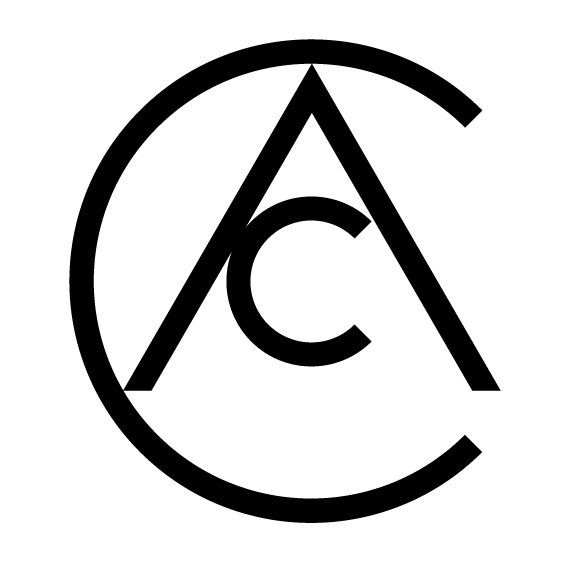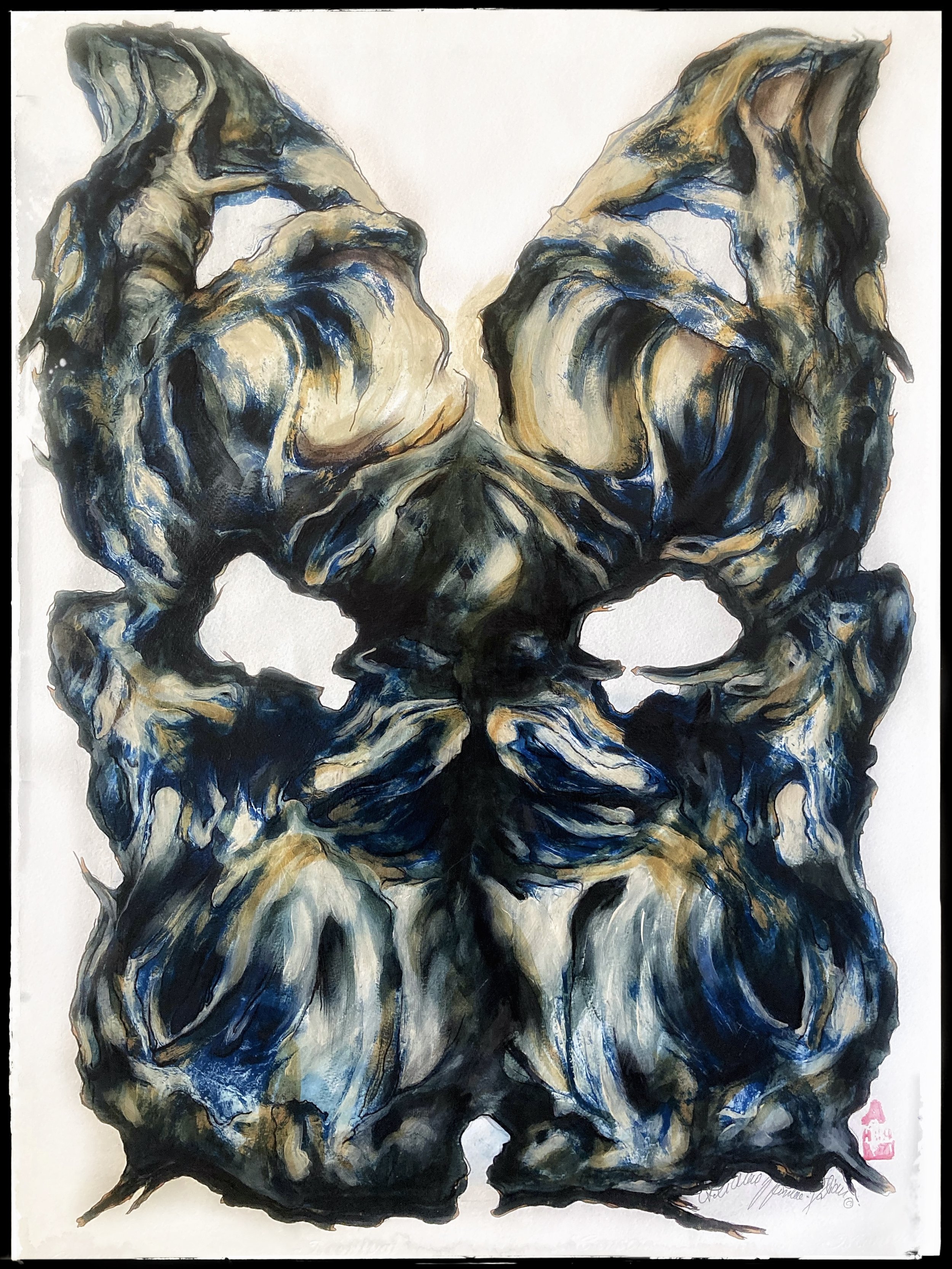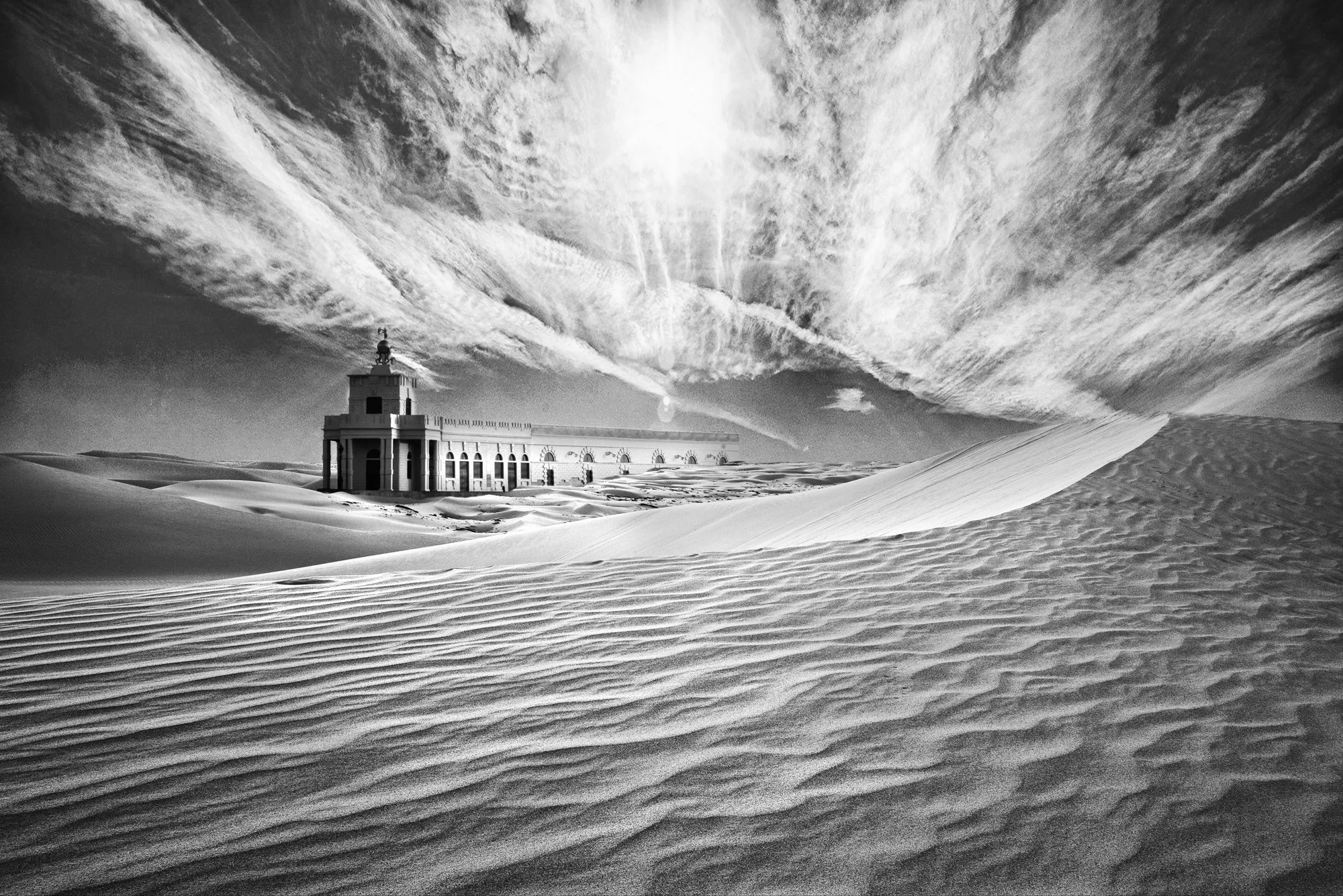Interview with Adrianna Wasinska-Fabian
Throughout your illustrious career, from the academic halls of the Academy of Fine Arts in Katowice to international recognition, how do you believe your style and thematic focus have evolved? Could you pinpoint a moment or experience that significantly transformed your artistic approach
Throughout my journey as an artist, I have experienced significant changes in both my artistic style and approach to my subjects. From my time studying at the Academy of Fine Arts in Katowice, Poland to gaining recognition, my work has evolved gradually over the years. When I first started out my art was heavily influenced by the academic style I learned in school, which I wanted to built on and extend beyond being a secondary artist with more traditional and representational approach to the subjects. I focused on mastering the basics and developing a strong foundation for my practice. My artworks have undergone a gradual transformation influenced by years of practising traditional art and experiments with various techniques.
Today, my art reflects a blend of my early training and the experimental phase. I have found a unique style that combines elements of traditional drawing with modern influences, creating a distinctive look that sets my work apart. My themes and inspiration never changed. From early childhood I was strongly connected to nature. Growing up in a big industrial city I found myself lost and detached from community. One pivotal moment that significantly transform my artistic approach was realizing that nature gives me unlimited inspiration, power of freedom and it never disappoints me. The solitude and raw beauty allowed me to focus more on emotion and contemplative space in my art practice. Nature prompted me to explore themes more profoundly, leading me to a shift towards more abstract and emotionally charged drawings. My vision has evolved to a more expressive and experimental one. As I continue to grow as an artist and human being, I strive to push boundaries, challenge convention, and find innovative ways to express my thoughts and emotion thought my art.
Nature, particularly horses, is a central theme in your artwork. How do you merge your observations from nature with the abstract visualization in your paintings? What techniques do you use to balance factual biological elements with artistic interpretation?
I aim to capture the essence, energy, and complexity of these majestic animals, while infusing my own artistic interpretation. It is a balance of factual biological elements with combination of art techniques and profonde relationship with horses. My art practise reflects but redefines horses as an art subject, yet my knowledge is visceral from decades of being an equestrian. I use different variety of art mediums from traditional drawing techniques like ink and fine art linear to acrylic and cyanotype. My pallet is quite narrow with only black and white or earthy colours to balance the dramatic composition of drawings, which are organic, dense and highly ornate. By blending these techniques and approaches, I strive to create artworks that are not only visually captivating but also emotionally enhanced.
The Dutch Equine Art Fair not only displayed your work but also brought together a diverse group of equine artists. How did participating in this fair influence your perception of your work within the broader context of equine art? Did this experience spark any new ideas or collaborations?
Participating in the Dutch Equine Art Fair was a transformative experience. It was the opportunity to showcase my work to a wider audience and allowed me to connect with a diverse group of talented equine artists. Being a part of such a prestigious event helped me see my work in a new light and understand its place within the vibrant and dynamic landscape of equine art. Moreover, interacting with fellow equine artists at the fair sparked interesting conversations. I found that discussing our work with each other deepened my understanding of my own artistic process and art practice.
The Exhibition allowed me to the new close collaboration with Joyce Ter Horst the founder and curator of Duch Equine Art Fair. The event was a remarkable achievement that truly exemplified the power of teamwork. As a self-representing artist, I understand the importance of receiving support from the art community at various levels. I am immensely grateful to Ms Paula Silber for her mentorship, which helped me navigate through my artistic struggles and find clarity in my work.
I would also like to extend my appreciation to the Department of Local Government, Sport, and Cultural Industries in Western Australia for their invaluable assistance and financial support. Their generous contribution made it possible for me to participate in the exhibition, and I am grateful for their support.
Overall, this event was a testament to the collaborative spirit of the art community and the impact it can have on individual artists. I am honoured to have been a part of such a meaningful and inspiring experience.
Working with themes of nature and equine beauty entails a deep understanding of both the subject's anatomy and its movements. What are the most challenging aspects of capturing the essence of horses in your artwork, and how do you overcome these challenges?
Capturing the essence of horses involves a deep understanding of their behaviour and anatomical structure. Although the subject of equine art is beautiful and captivating, my biggest challenge lies in overcoming traditional narrative and realism. Translating the subject requires skilful observation and mastery of techniques I use.
My process of creating is always long and unclear, it is a mixture between my intellectual and empiric experiences. The drawings are coming from the deepest part of my soul, born from circumstances and challenges I faced.
Emotions are rooted deeply in my art practise. Capturing the depth of emotions and spirit, desires sensitivity, empathy, and authentic connection with horses. This allows me to explore more symbolic and metaphoric themes of freedom, strength and spirituality associated with them.
With your academic background in painting and etching, how do you incorporate traditional drawing techniques into your modern artistic expressions? How important is it to maintain these traditional skills in today’s digital art world?
Drawing is one of the oldest forms of human expression and communication. It is a timeless tool that connects us to our culture and roots. It has been practiced worldwide for millennia, serving as a bridge between our intellect and existence.
Traditional drawing techniques serve as the foundation of my artistic practice, providing me with the fundamental skills to create meaningful works. Drawing like nature is part of me, and it is the medium I feel most comfortable with. Through regular practice and study, I can develop a unique visual language and produce individual and authentic works. The physical act of drawing allows me a direct connection to materials and my subjects. It creates sense of intimacy and engagement.
Digital art tools are part of human evolution, based on our intellect and intelligence, and I can’t deny their importance as an artist. In my opinion they are tools we should use wisely. Those tools are based on all traditional techniques developed by generations. Those crafts are crucial in creating digital artwork. Without them digital art is only repetitive and generic, lacking authenticity, human touch and soul.
As a passionate naturalist, how do you see your art contributing to the conversation about environmental conservation? Do you think art has the power to influence public perception and action towards nature conservation?
Art has incredible power to inspire people, connect and help them appreciate the beauty of the natural world. Through history we have often overlooked the fact that we are just a small part of something larger than ourselves. Modern art has the power to challenge our thoughts and beliefs, pushing us to consider alternative perspectives and possibilities. It can persuade us to question our assumptions and open our minds to new ways of thinking. Art encourages us to explore different interpretations and meanings, expanding our understanding of the world around us.
In European history, from the Greek and Roman Empire to The Industrial Revolution we have been entirely disconnected from nature, building a wall between us. However, by creating art that highlights the wonders of natural world, audience are more likely to develop a deeper appreciation and emotional connection to it. Art has ability to connect and motivate individuals. It encourages people’s involvement in protecting our natural world.
Having your works included in prestigious collections and winning numerous competitions must be profoundly validating. How do you handle the external expectations and pressures that come with such recognition? Does it influence your creative process?
The experience being recognise by critiques and art collectors is remarkable and rewording. But it didn’t come over the night. I have been working as a visual artist for many years. It is a hard work, and the recognition give me a sense of accomplishment and belonging. The recognition allows me to set higher goals and is leading me to artistic growth.
Through my artistic carrier I learned a balance of staying true to myself and my artistic vision. I do not compromise and constantly explore and push myself for trying to achieve more remarkable artworks.
Looking forward, how do you plan to expand or deepen your artistic explorations? Are there new themes, mediums, or techniques you are eager to explore in your future projects?
Nature serves me as an unlimited source of inspiration, consistently fuelling my artistic journey. In my lates series “Mirror Horses” I have expended my artistic repertoire by integrating mix media techniques, particularly cyanotype. This unique photographic process harnesses the power of sunlight to produce unique artworks. I am excited experimenting with cyanotype and infusing my drawings with elements of nature, in this example the power of sun and light.
The second series I am working on, are called “Into the woods’’. Deep, dark endless biological forms of bark, driftwood and roots. In those art prints I rely on lithography technique and enhance them with drawing and acrylic paint. Both series has been recognized by judges and curators across Australia and Europe.
Horses are not just subjects in your artwork but are also a significant part of your life. Philosophically, what do horses represent to you, and how does this belief manifest in your artwork and your life philosophy?
Horses are part of me. They embody a sense of wildness and connection to the nature that resonates deeply with my own values and beliefs. In my practise they are symbol of freedom and untamed spirit. Spirt which I become hybrid with. One organism.
Through their powerful presence they evoke in me a sense of liberation and authenticity. Horses speak directly to me through emotions and vulnerabilities. They are the reminder to embrace innate instincts and intuition, to be true to myself and live authentically.
I believe that immersing myself in the equine world I can tap into understanding the universe around me. I hope my drawings encourage others to connect with their own inner wildness and find liberation and authenticity.


















